Rainwater harvesting systems are one of the best methods practiced and followed to support the conservation of water. It collects and stores rain rather than allowing it to run off. Rainwater, which is pure in form and of good quality, can be used for watering gardens, washing, cleaning, bathing, cooking, irrigation, and domestic uses.
Although rain is one of the cleanest water sources, every drop results from condensation around airborne dust, clay, chemical, or salt particles. Hence, it should be filtered before it is kept in a tank. This is done to maintain it in the best possible shape and prevent biological material from degrading, developing odors, and turning discolored, among other things.
The roof and gutters of a building are not sterile environments. Therefore, rainwater will pick up moss, dirt, leaves, bird faeces, etc. on its way to the tank. It is, therefore, essential to install an effective pre-tank filtration system and, in some cases, additional treatment to ensure that the stored rainwater can be used effectively and safely.

10 Reasons Why You Need Rainwater Harvesting Filter
- Helps in collecting rainwater
When we first started collecting rainwater on our roofs or in percolation tanks, we didn't trust the water to be drinkable in its raw form. It seemed safe to drink the rainwater, and to some extent, it was safe. But since then, the times have changed and, more significantly, the surroundings have changed. The impurities present in the stored water include algae, air pollution, bird droppings, leaves, sand, and dust. Therefore, filtering and disinfection methods are required if the gathered water is to be used for household purposes.
- Rainy's dual intensity
filters work at high efficiency regardless of the intensity of rainfall, have self-cleaning abilities, are maintenance-free, and are rooftop rainwater harvesting filters.

- THE PUSH-N-LOCK HDPE PIPING SYSTEM(portable)
High-density polyethylene (HDPE) pipes have, over the decades, proven their capabilities as the ideal form of piping for various water management applications. However, there have been very few jointing techniques that offer an easy yet robust installation experience.
We created an HDPE Push-N-Lock Type interlocking coupling system with a union that provides a simple yet secure connection. Along with the pipes, which have a standard length of 6 meters, we manufacture push-n-lock type tees, bends, reducers, and end plugs to complete the range.
The pipes and fittings are manufactured using HDPE resin, grey master batch, and UV stabiliser additives to increase the life of the pipes, fittings, and overall system. To keep the joints leakproof, we have designed the sealing rings using rubber and polypropylene.

- UNIQUE TECHNOLOGY(non-clogging filter)
- Various Applications
Works on the principles of cohesion and centrifugal force at low and high intensities of rainfall, respectively. Does not need external energy because it relies only on gravitational forces.

- HIGH EFFICIENCY
- EXTREEM VERSATILE AND COMPACT
- Superior Built Quality
- Value For Money
- Easy To Install
Why did conventional filters fail
The mechanical filters are designed with the gate wall system at the drain side. When the dirt particles enter the filter, the dirt and debris enter the filter housing assembly. The filter candle needs to be cleaned by opening the valve manually. The most significant drawback of these systems is their need for periodic maintenance.
Because clogging is hard to predict and rain is hard to predict, this system has a lot of problems. This results in debris clogging inside the filter and chances of decay, water contamination, and overflowing of water through the filter or terrace area, resulting in unsafe water flow to the surrounding environment.
Conventional filters vs Rainy filters
The major drawbac kobserved in conventional filters is the clogging of dirt, debris, and leaves inside the filter housing assembly and the lack of an automatic flushing system, which calls for frequent manual cleaning. This might lead to decay, water contamination, and overflow into the terrace area. Conventional filters cannot handle torrential rains, leading to an undue waste of precious water. Setting the direction of the inlet and outlet as per site conditions is not possible with conventional fixed coupling filters. Common disadvantages are high head requirements, a tedious installation process, limited roof area coverage, etc.
Advantages of rainwater harvesting filters
- Purifies and Reduces Salinity and Fluoride Contents in the Borewells
- Provide good drinking water and irrigation water.
- Unlike hard water, rainwater does not cause scale and corrosion.
- Rainwater harvesting helps individuals save on their water bills, and the cost to supply the mains and overall water services can be substantially reduced when many people in one community use rainwater.
- Harvested rainwater can reduce demand for groundwater as rainwater can be stored and used during droughts when groundwater supplies are increasingly strained and depleted.
- Rain is free from chlorination. Using filtrated, clean, and healthy rainwater for plants and trees can save money on overall property maintenance and landscaping needs.
- Increase Groundwater Level by Recharging, Borewelling, and Open Well Recharging
- Rooftop Rainwater Harvesting and Solves Water Logging Issues
- Decrease stormwater runoff, urban flooding, and sewage treatment plant overload.
- Reduce seawater ingress in coastal areas.
Conclusion
Rainy Products that collect rainwater are made and sold after years of research and using only homegrown, patented technology. Products are manufactured in-house using our own research, development, and testing facilities. With continued innovation in order to help conserve every drop of rainwater, rainwater filter products are the best available that suit all purposes. Custom-made solutions are also provided by expert engineers to suit the needs.

